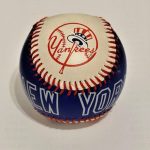The Major League Baseball All-Star Game, often referred to as the "Midsummer Classic," is an annual exhibition game showcasing the best talent from the American League (AL) and the National League (NL). Held in mid-July, it marks a symbolic halfway point in the MLB season, offering fans a chance to see their favorite players from opposing teams unite for a single contest.
The history of the All-Star Game dates back to 1933, initially conceived as a one-time event during the Chicago World's Fair. Its immense popularity, however, led to its continuation, becoming a yearly tradition. Over the decades, the game has evolved, with changes in player selection, format, and even the implications for World Series home-field advantage.
Initially, fans had no say in choosing the All-Star rosters, with managers making the selections. However, fan voting was introduced in 1934 and continues to this day, allowing fans to participate in choosing the starting lineups for both leagues. Pitchers and reserves are selected by a combination of player voting and managerial discretion, ensuring a comprehensive representation of the league's best performers.
The All-Star Game has provided countless memorable moments throughout its history. From spectacular home runs and diving catches to nail-biting pitching duels, the game consistently delivers excitement. These moments become enshrined in baseball lore, adding to the rich tapestry of the sport's history.
Beyond the game itself, the All-Star festivities extend to several days, encompassing events like the Home Run Derby and Futures Game. The Home Run Derby, a crowd favorite, pits sluggers against each other in a timed competition to hit the most home runs. The Futures Game showcases rising stars from minor league teams, offering a glimpse into the future of the sport.
The All-Star Game has also seen its share of controversies. One notable instance was the 2002 game in Milwaukee, which ended in a tie due to both teams running out of pitchers. This led to a rule change, implemented in 2003, granting home-field advantage in the World Series to the league that wins the All-Star Game. This rule remained in effect until 2016.
While the rule tying the All-Star Game to World Series home-field advantage has been discontinued, the game continues to hold significant meaning for players and fans alike. It's a chance for players to be recognized for their exceptional performance and for fans to celebrate the best of baseball.
The Midsummer Classic represents more than just an exhibition game; it's a celebration of baseball's rich history, a showcase of its current stars, and a glimpse into its exciting future. It's a mid-season spectacle that reminds us why baseball remains a beloved sport, captivating generations of fans.

